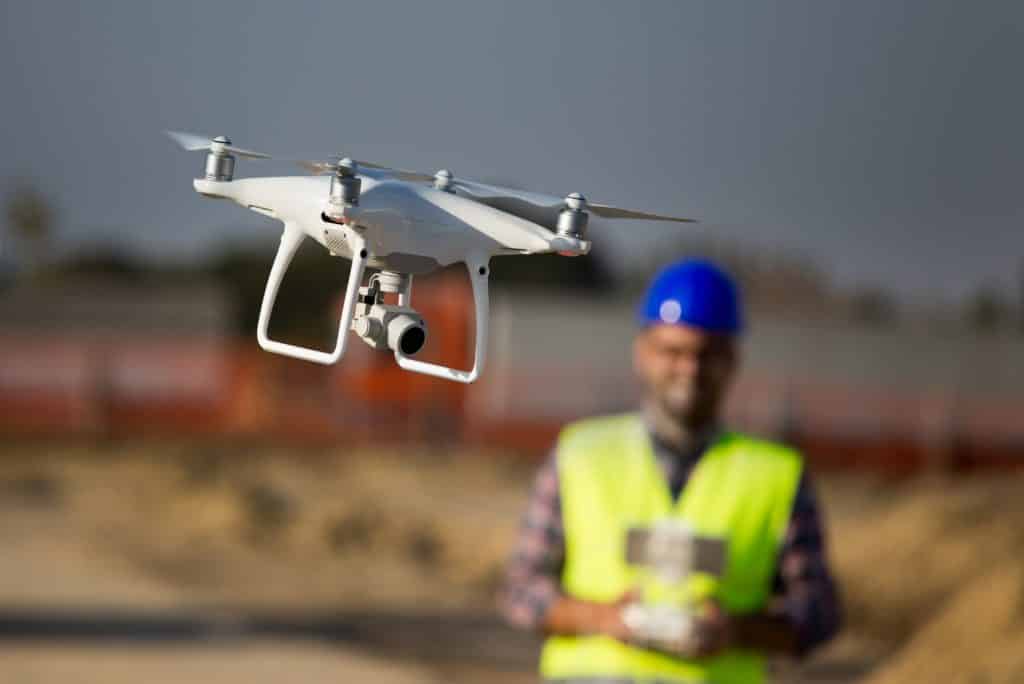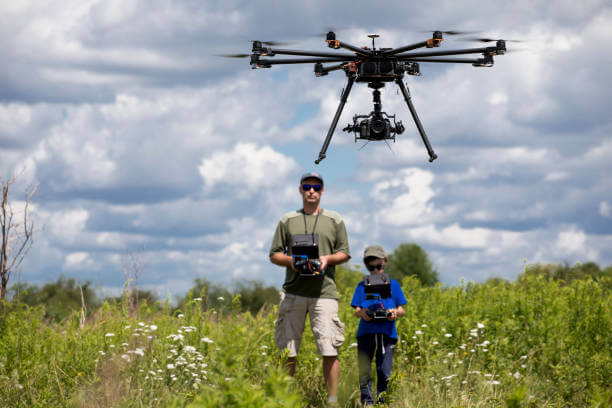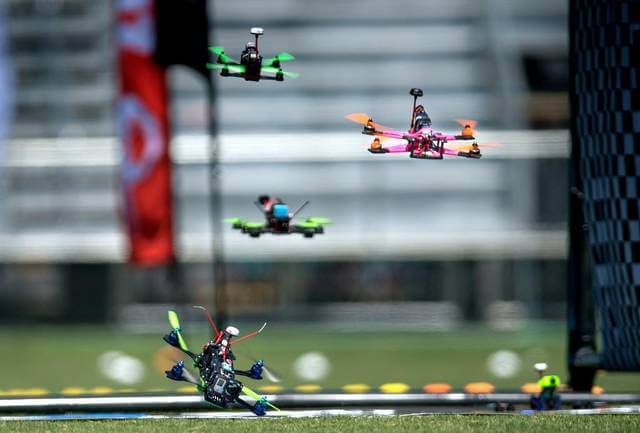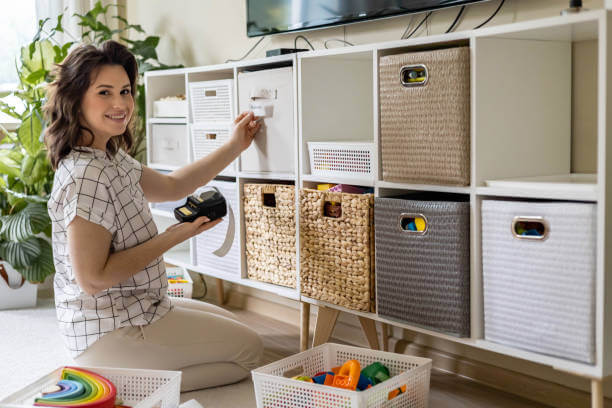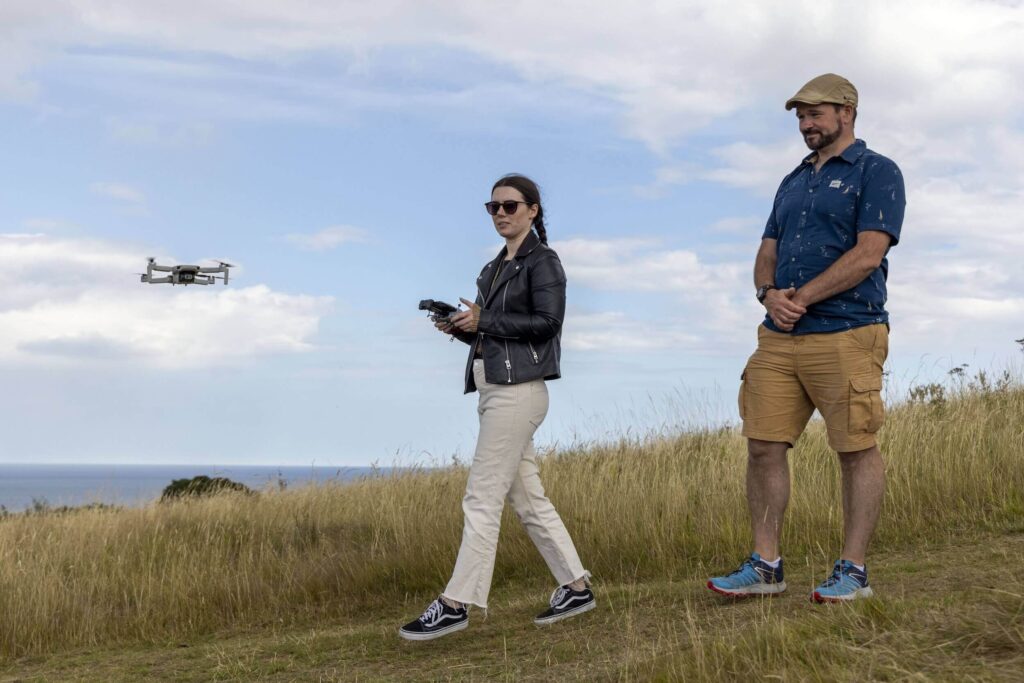The best drones for surveying aim to capture aerial perspectives for conducting topographic or ground-based surveys.
Surveying data is traditionally collected in person using surveying instruments like total station, auto level, GPS, etc
A drone survey is followed by making quick, accurate, and less expensive measurements of a piece of land using aerial photography, irrespective of any changes or obstacles on the ground.
Using drones for surveying and mapping is one of their crucial features.
This ultimate guide to drone surveying includes the best drones for surveying and mapping.
Moreover, we will walk you through the best survey drones on the market, the term drone surveying means, its workings, and its uses.
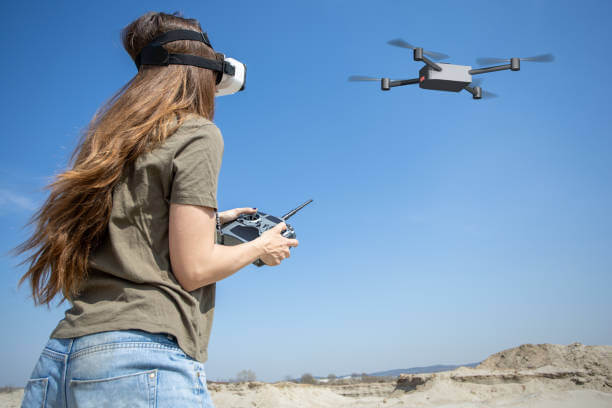
Top 6 Best Drones for Surveying and Mapping Reviews In 2024 USA
1. DJI Phantom 4 RTK: Best Drones for Surveying Salty Land
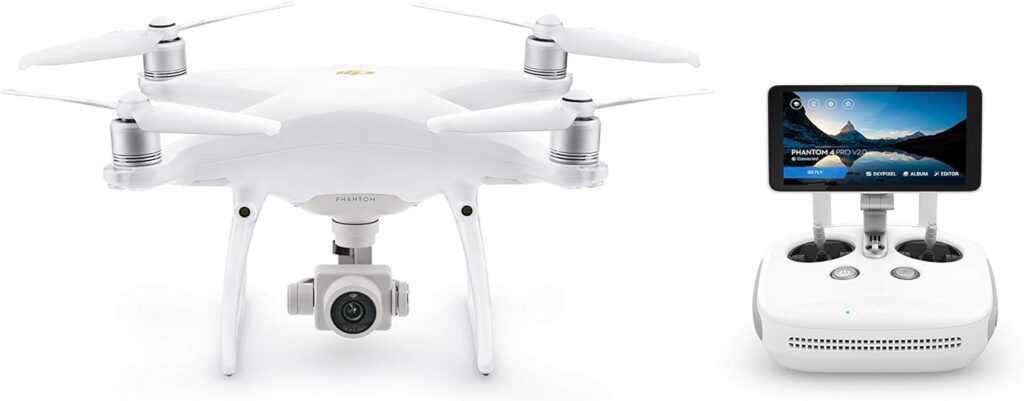
Pros
- Brand: DJI
- Model Name: DJI Phantom 4 RTK
- Photo:100-3200(Auto)
- Remote Control Included?: No
- Video Capture Format: MP4, MOV
- Material: TPR
- Control Type: Remote Control
- Item Weight: 11 Pounds
- ISO RangeVideo:100-3200(Auto)
- Video Capture Resolution: 4K HD
- Autofocus at 1 m – ∞
- Colour: White
- Sensor1″ CMOS; Effective pixels: 20 M
Cons
- A third-party app is necessary for true mission planning.
A surveying and mapping company employed me as a senior drone projector.
We were tasked with assessing 115 acres of salted fields in the Senegalese commune of Loul Sessene with a drone camera.
The goal was to ascertain the functioning of the saline flats.
Land salinity affects the environment, the economy, and food security.
Moreover, it poses a significant obstacle to West African growth.
The precise estimation of saline land is difficult to measure because satellite imagery gives incomplete information.
My DJI Phantom 4 RTK drone is a huge help in this scenario as it gathers flawless photos of the survey region.
For a very long time, DJI’s Phantom 4 drone was regarded as the industry standard for professional-grade drones.
The RTK version introduced three years ago transformed the Surveying pros
This drone combines RTK technology with the features that made the Phantom 4 stand out in the industry.
The greatest drone for surveying saline land is this one.
Features:
Sensing Obstacles:
Infrared detection systems have been added to Flight Autonomy, along with an additional set of high-resolution stereo vision sensors in the back, two in the front, and an extra set on the left and right sides.
With this network, filmmakers may capture more intricate sequences while shielding the Phantom 4 Pro from more impediments. It enables five-direction obstacle detection and four-direction obstacle avoidance.
Outstanding Drone:
This drone has a 5870 mAh battery that can fly for up to half an hour.
An essential component of the drone is the RTK module, which is found at the top.
When used with the D-RTK2 base station, this drone can accurately record spatial data down to the centimeter level.
It produces top-notch results for the websites of my business.
What makes this drone the best?
It comprises a new controller with a microSD card slot for storing survey data, hot-swappable batteries, and 4G connectivity for cloud backup.
This drone’s specially created GS RTK software makes field execution and flight planning simple.
It simplifies complex images by automatically detecting subjects, tracking them, and recording them as they move.
I got excellent surveying images of the region because of all these intriguing characteristics.
Summary:
Since smart devices are frequently operated through cutting-edge smartphones, they are indispensable for mapping and surveying tasks.
It’s perfect for the surveying demands of my business.
I advise everyone to purchase this drone.
The greatest drone for surveying saline land is this one.
2. DJI Mavic Air 2: Best Drones for Land Surveying
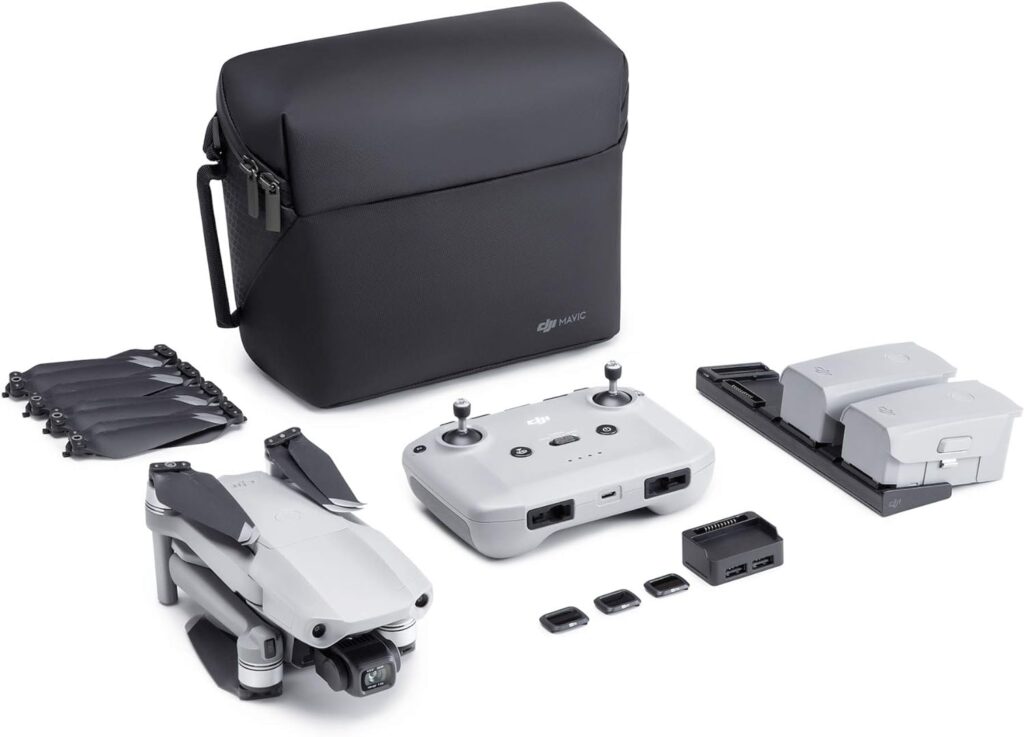
Pros
- Brand: DJI
- Model Name: DJI Mavic Air 2
- 240 fps Slow Motion at 1080p
- HDR Video, Images & Panoramas
- Colour: Gray
- 1080p Video Transmission
- Video Capture Resolution: 4K HD
- Control Type: Remote Control
- 8K Hyperlapse Time-Lapse Video
- Focus Track Subject Tracking Modes
- Return to Home & Precision Landing
- APAS 3.0 Obstacle Avoidance
- Up to 4K60p Video & 48MP Images
- Remote Controller & Fly More Accessories
- Up to 34 Minutes of Flight Time
- Easy to Use
Cons
- No EV control wheel on the remote.
My older brother was raised in a rural household.
To carry on his family’s business, he is majoring in agronomy.
He bought some land with the idea of establishing a horticultural enterprise there.
He therefore wanted to properly evaluate and research the state of the property before starting to build.
He asked me to do this for him.
As an experienced and certified drone photographer, I help him and his staff solve agricultural problems.
It is remarkable how having a visual record of any property may assist with matters such as electricity, machinery efficiency, building and facility use, environmental concerns and pollution, and the storage and processing of agricultural produce.
I use my DJI Mavic Air 2 drone for stock photography and filming.
The greatest drone for surveying land is this one.
Features:
Extended and Secure Air Travel:
With a maximum flying speed of 42.3 mph and a battery life of up to 34 minutes, Sport mode allows you to stay in the air for as long as you desire.
The drone looks at its surroundings from three different angles: above, below, and backwards.
It’s perfect for pushing the envelope because it has an auxiliary light for better vision and obstacle avoidance for further security.
Now is the ideal moment to capture a once-in-a-lifetime moment on camera.
Step up your Game:
This drone camera is pushed to its absolute boundaries in power and mobility.
With its robust camera and appropriate shooting settings, it produces amazing photos.
Put in a sincere attempt.
My favorite is Intelligent Tracking in particular.
Its easy-to-use shooting settings increase accessibility to aerial photography.
Spotlight 2.0 maintains the camera’s focus while allowing it to move freely.
To help participants stay focused, ActiveTrack 3.0 is used.
Tracks from POI 3.0 are included.
What Makes this Drone the Best?
The Mavic Air 2’s 1/2-inch CMOS sensor captures 48MP images.
The smooth 4K/60 fps footage makes it easy for me to grasp new aerial views.
For post-processing, the D-Cinelike flat color profile retains more image information.
It produces next-level entertainment by conserving visual data, using less storage, and preserving the dynamic range and clarity of my video.
Summary:
The DJI Mavic Air 2 is the most important event drone for video.
I can now provide my clients with fantastic images thanks to it.
Many family members can quickly take high-resolution pictures with it.
The greatest drone for surveying land is this one.
3. DJI Mavic 2 Pro: The Best Drone for Mountain Surveying
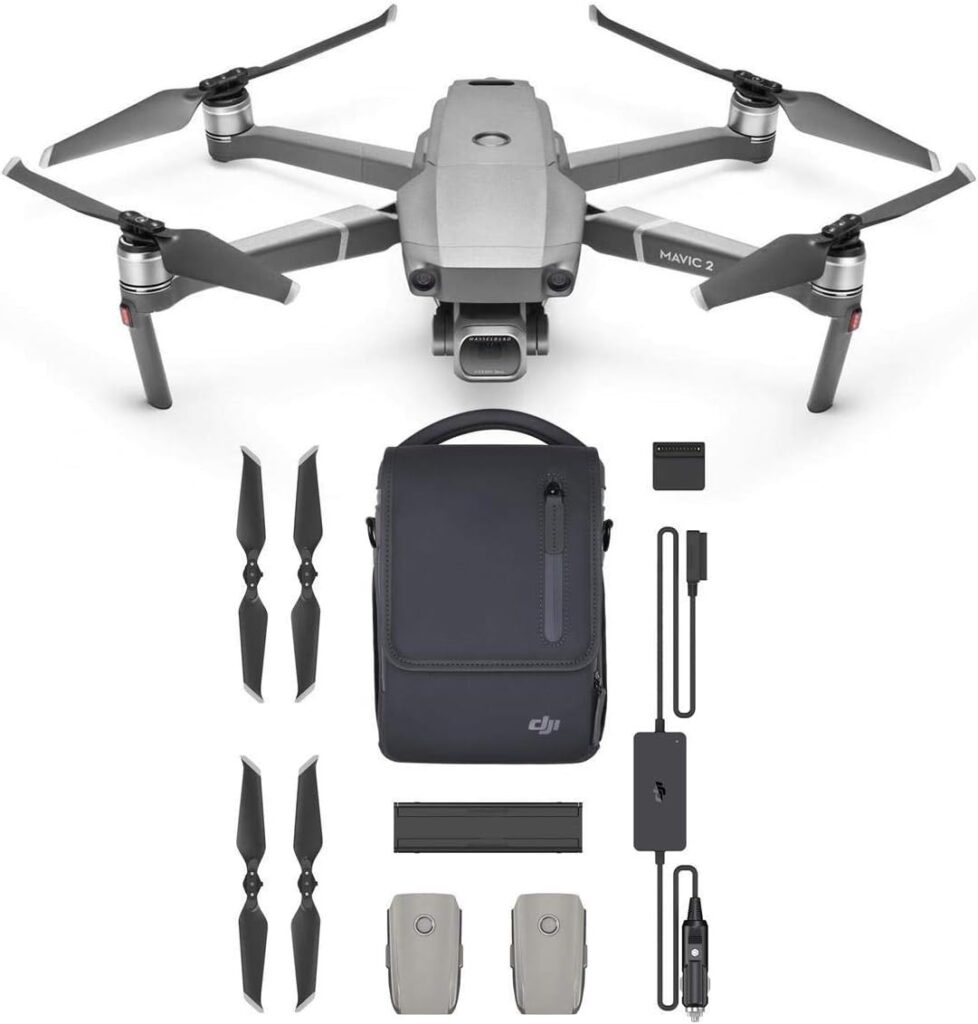
Pros
- Brand: DJI
- Model: DJI Mavic 2 Pro
- Media Type: Micro SD
- Hyper lapse
- Active track 2.0
- Effective Pixels: 12M
- Omnidirectional obstacle sensing
- Colour: Grey
- Camera-: 1/2.3″ CMOS
- Obstacle Sensing: Forward/backward/downward
- Flight time: 31 minutes
- Lens: Aperture: f/1.7
- Battery size: 3850 mAh
- Speed: 45 mph
- Flight range: 18 km
- Video Capture Resolution: 4k
- Low-noise
- Weight: 907 g
- Max Flight Time: 34-min max flight time
- Mirror Adjustment: Remote Control
Cons
- Internal memory—8GB is insufficient.
- There is no support for the DCI format.
Surveys can evaluate the operations of organizations more effectively and gain a deeper understanding of them.
Drones are the finest alternative for surveying big land areas
In the 13.7 km2 mountain ranges in Ras al Khaimah, my team had the chance to map a limestone quarry and conduct a land survey.
The activities of the quarry need a comprehensive assessment of the whole area.
It was previously unimaginable, yet my team mapped the entire site in a single day thanks to drones.
This was accomplished with my DJI Mavic 2 Pro in a single day.
It meets the needs of the organizations by producing amazing images.
Attractive features include its 4K camera, automated obstacle avoidance, and ease of use when flying.
You won’t have to land as frequently because of its 34-minute battery life and three-axis gimbal, which stabilizes photos.
The best drone for surveying mountains is this one.
Features:
Obstacle Sensors:
Being the only drone on the market with all-direction obstacle-avoiding detectors, this one is the most intelligent in the sky.
With obstacle-sensing intelligence, I can fly my drone with safety and confidence.
Even though taking pictures of mountains might be difficult, this drone made it simple for me.
Very Durable
This drone is excellent for mapping, with a video transmission range of up to 18 kilometers.
For professionals who need to map out a vast area, it is extremely reliable and capable of monitoring a large area.
Four distinct sensors are included with the drone when it is in use, offering exceptional stability and ensuring damage-free flying.
Why is this drone the best?
It can fly for thirty-one minutes over a distance of eighteen kilometers.
The 12 million pixel 1/2.3′′ CMOS camera collects visuals for modules.
It is the most sensitive drone for shooting in large mountainous areas, weighing
907 g and holds a 3850 mAh battery.
Wearing it for the mapping shoot in the Highlands made me feel fairly comfortable.
Summary:
The Drone is tough, enabling me to explore more difficult, rocky areas in less time because of its extended flying duration, tremendous range, and a peak speed of 45 mph.
I found it to be flawless.
The best drone for surveying mountains is this one.
4. DJI Inspire 2: The Best Drone for Mining Surveying
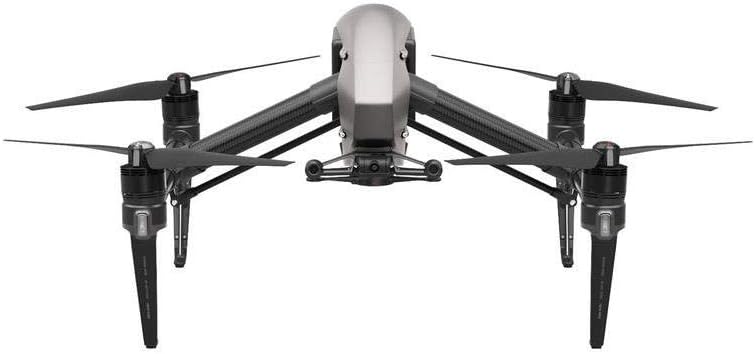
Pros
- Brand: DJI
- Model Name: Inspire 2
- Operating Temperature: (-20° to 40° C)
- Colour: Gray
- 58 mph Maximum Velocity
- CineCore 2.0 Image Processing
- Accelerates to 50 mph in 4 Seconds
- Intelligent flight modes. Obstacle Sensing Range :(0-5 m)
- Dual-Battery Design
- Control Type: App Control
- Advanced Obstacle Sensing
- Spotlight Pro: Compatible with 5.2K Gimbal Cameras
- Sense and avoid
- Includes Cendance Remote
- Camera with 16mm Lens
- 2-Axis Stabilized FPV Camera
- Workflow efficiency
Cons
- Video editing requires a powerful computer.
- CinemaDNG workflow is hampered by an Adobe Premiere CC bug.
Mining is a capital-intensive industry that requires ongoing surveying and monitoring of biological material.
Last week, my father—a mining sector worker—gave me an assignment.
They needed a comprehensive 3D map of the region.
Mineral, rock, and ore reserves are difficult to measure.
Using special cameras, drones scan mining activity and gather volumetric data on deposits.
The DJI Inspire 2 is the drone I trust the most.
The risks associated with using surveyors on the ground are removed.
Because of its superior safety features and outstanding flying, stability, gimbal, camera, and obstacle recognition capabilities, I did my chores faster than I would have with a regular camera.
The best drone for mine surveys is this one.
Pro Spotlight:
Even single pilots can use its strong tracking mode, Spotlight Pro, to take intricate, dramatic pictures.
Regardless of the direction the Inspire 2 is flying, it uses visual-tracking solid algorithms to lock on to a target during flight, producing views that previously would have required an experienced camera operator.
The Inspire 2 will spin in the same direction after it has exceeded its rotational limitations without compromising flight control or taking a shot to release the gimbal.
Strong Piloting Ability:
With a top speed of 58 mph, the Inspire 2’s propulsion system enables ascents and descents of 29 and 19 feet per second, respectively.
It can accelerate from zero to fifty miles per hour in four seconds with a maximum attitude angle of forty degrees.
The two controller sticks on the transmitter have been made more sensitive, facilitating more accurate motions.
What makes this drone the best?
This drone’s ActiveTrack Mode enables it to recognize a variety of objects, from mobile to stationary.
Tracking accuracy is increased by using personalized profiles that are dependent on the person being observed.
This aeroplane is high-end and performs exceptionally well.
Summary:
The DJI Inspire 2 is the ideal drone for mining surveys.
Additionally, video mode works best.
It gives me great pictures of the places I go.
This amazing drone camera is highly recommended by me.
The ability to use a variety of lenses opens up new creative options and creates video that is unmatched by anything else available.
On the other hand, footage captured with the large Micro Four Thirds sensor has a depth that small sensor drones do not have.
The best drone for mine surveys is this one.
5. DJI PHANTOM 4 PRO V2.0: Best Drone for field survey
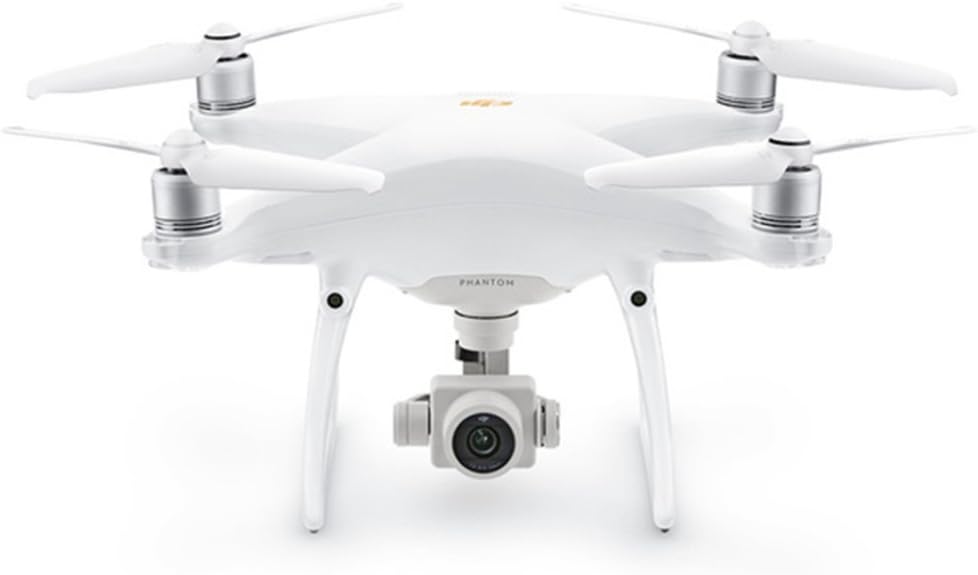
Pros
- Brand: DJI
- Model Name: Phantom 4 Pro V2
- Visual Tracking of Moving Subject
- Material: Titanium
- Control Type: Remote Control
- 1″ 20MP CMOS Sensor
- Maximum Control Range of 4.3 Miles
- Top SpeedSpeed of 45 mph in Sport Mode
- Remote Controller Included
- Colour: White
- Four Directions of Obstacle Avoidance
- Ocusync Transmission
- Video Capture Resolution: 2160p
- Up to 30 Minutes of Flying Time
- Gimbal-Stabilized 4K60 20MP Imaging
- FlightAutonomy with Redundant Sensors
- Media Type: Micro SD
Cons
- Longer to set up than drones that fold
My closest friend asked me to complete a task for him.
He had a senior survey task to accomplish.
That would require a talented drone artist.
It was difficult to take pictures of the tomato agricultural area in his village near Paris.
With my favorite drone, the DJI Phantom 4 Pro V2, I packed my belongings.
It was great fun to shoot hundreds of lines of fields, tiny leaf branches, and gorgeous colorful tomatoes.
This drone has an amazing camera, which allowed me to take some of the best photos I’ve ever taken.
He was astonished to see his project.
Once his professor gives the okay, I share it on my social media accounts and on Fiverr.
That shot brought me a ton of orders.
For field surveys, this drone is the best.
Features:
Incredible Gimbal Camera:
The rolling shutter distortion of the onboard camera is reduced with a mechanical shutter and a 1-inch 20MP CMOS sensor.
The image data required for top-notch post-production is captured by an intricate sensor and cutting-edge processing.
The best drone camera for field surveys is this one.
It inspired me to take incredible pictures.
Strong Piloting Ability
This drone has multiple flight modes making it easy to use and quick to fly.
Pilots have more control over their flying experience when they switch between smoothness, simplicity, and speed.
Easy controls and a top speed of 45 mph make complex images, such as close-ups in between the fields where distance is accurate, easier to obtain.
What makes this drone the Best?
The entire charging process of an Intelligent Flight Battery takes around 58 minutes.
Like with the original, I can shoot stunning pictures with the updated edition in a wider variety of settings.
The best drone camera for conducting outdoor surveys is this one.
I recommend everyone to purchase this amazing drone.
Summary:
There is a smartphone holder included with the main controller.
I need to download the DJI GO 4 app to my phone to operate my drone.
This camera’s excellent color reproduction helped to create the ideal landscape for my friend’s project.
The drone best for field surveys is the DJI Phantom 4 PRO V2.0.
6. DJI Mavic Pro: The best Drone for an Agricultural Land Survey
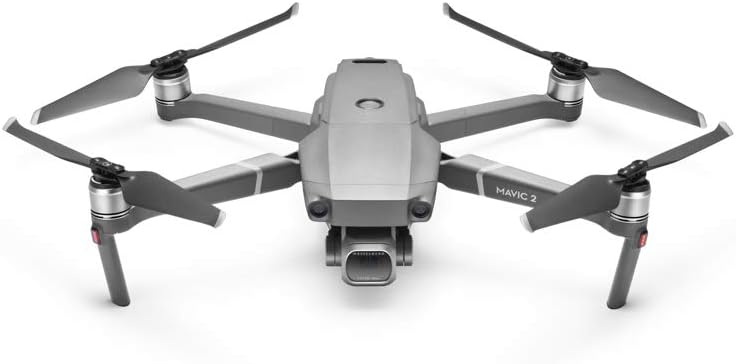
Pros
- Brand: DJI
- Model Name: DJI Mavic Pro
- Item Weight: 4 Pounds
- Maximum Range: 4.3 Miles
- Video Capture Resolution: 4k
- Colour: Gray
- Control Type: Remote Control
- Media Type: Micro SD
- TSO Photo Range: 100-1600
- Item Weight: 1.64 Pounds
- ISO Range Video: 100-3200
- Max Hovering Time24 minutes (no wind)
- Are Batteries Included: Yes
- Operating Temperature Range:(0° to 40°C)
- Video Capture Format: MP4
- Wireless Communication Technology: Wi-Fi
- Max Flight Time27min)
- Battery2970mAh
- Effective pixels:12.35 M
Cons
- Smartphones are mandatory for the whole experience.
Precision farming has been driving the agricultural revolution in recent years.
The next step seems to be using agricultural drones to observe crops from the air.
My father was a well-known farmer in North Carolina.
To better plan and oversee their operations and gain more accurate crop insights, he has been experimenting with novel agricultural engineering techniques.
He frequently asks me to carry out a field assessment so he can oversee the product for the upcoming season.
It will take time for me to complete all of the land surveys that I will need to undertake.
The DJI Mavic Pro has been my go-to drone for taking pictures of our relatives’ ancestral homeland.
The output of the camera was quite good for taking pictures of beautiful scenes.
The best drone for surveying agricultural land is this one.
Features
Fly Higher:
The DJI logo is present on the Mavic’s compact remote controller, which also makes use of DJI’s exclusive OcuSync transmission technology.
It is capable of Full HD 1080p short range, HD 720p long range, and video streaming up to 4.3 miles.
Considering all of these options, I came up with a creative solution.
Comply with the Instructions:
My commands are almost immediately carried out by the Mavic.
I can give any instruction, even operating in Sport Mode or taking a calm, delicate, flowing picture.
It is the most delicate drone due to this capability because it adheres to my instructions exactly.
No Scraps or Bumps:
Returning to Home mode, an unprotected drone may crash into objects when traveling long distances or descending from an inadequate height.
To reduce accidents, the Mavic uses Flight Autonomy technology to identify obstacles up to 49 feet (15 meters) away and either avoid or pause to hover over them.
What makes this drone the best?
Being roughly a sixth of the size of the Phantom 4, this drone is the most remarkable because its shorter flying duration is not implied by this fact.
The Mavic’s flight duration is significantly longer than its small size would imply.
Thanks to its reliable and highly efficient engines, it can fly for up to 27 minutes and cover a maximum distance of 8 miles (13 kilometers).
The best option is to use this drone to photograph the main event.
Summary:
All Mavic models can record 4K video at 30 frames per second.
All footage is assured to be in 4K as Electronic Image Stabilization is not used
For me, this drone is a need because of all the features listed above.
For adult fashion pictures, this is the most delicate drone available.
I recently completed a major event with its help.
I wholeheartedly recommend this drone.
The best drone for surveying agricultural land is this one.
What is a Drone Survey?
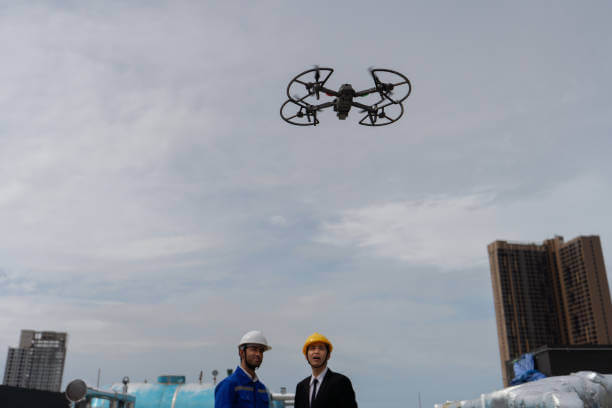
Surveying is probably one of the largest businesses that drone technology has affected, second only to industrial inspections.
Drones have not only accelerated the surveying and mapping process, but they’ve also cultivated new horizons by accessing difficult terrain with a variety of data.
It’s critical to discuss both the surveying types that drones support and the data types that drones can gather to fully comprehend what drone surveying is.
Drone Survey Types:
1. Topographic Surveys
Topographic drone surveys yield precise, in-depth three-dimensional maps with valuable survey data about the topography and its features, such as lakes, houses, and trees.
2. Surveys of Photogrammetry
Photogrammetry creates 3D models, also known as 3D maps, from still photographs by superimposing photos. Drone photogrammetry surveys help produce comprehensive orthophotos, model topography, and calculate volumes.
3. Surveys of Construction Sites
Drone surveys can monitor a building site’s progress and provide updates to guarantee that a project is being carried out on schedule and within budget. They can also aid with resource management.
4. Surveys of Agriculture
Drone surveys for agriculture can be used to analyze land, evaluate crop health, and determine irrigation requirements to maximize farming productivity.
5. Surveys on the Environment and Conservation
Drone surveys used for environmental monitoring can assist land managers and environmentalists in tracking changes in the environment, tracking wildlife, monitoring ecosystems, and creating detailed maps of trees and other plants. To monitor emissions and carry out other tasks linked to climate change mitigation, researchers have recently started looking into ways to combine drone surveys with LiDAR data to get extremely accurate estimations of the amount of carbon stored in a particular patch of forest.
Drone Surveying Sensors Types
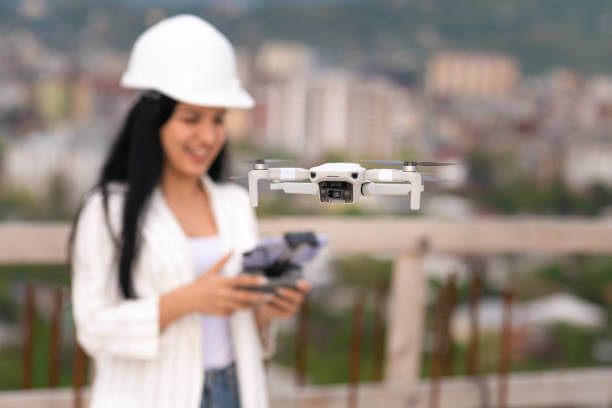
Drone surveys involve more than just gathering visual data. You gather the information required for the kind of survey you’re carrying out.
These are the various kinds of sensors that are employed in drone surveying.
1. RGB Sensors
Red, Green, and Blue, or RGB for short, refers to the typical visual camera that you use to take still pictures. One of the most popular sensor types for drone surveys is an RGB sensor since it can produce detailed photographs of locations or landscapes for photogrammetry surveys.
2. LiDAR Sensors
Laser light is used in LiDAR (Light Detection and Ranging) technology to determine distances to the Earth’s surface. These sensors can create incredibly precise 3D models of a studied region even through thick vegetation.
In the past several years, LiDAR drones have completely changed the surveying process, enabling archaeologists to find previously undiscovered sites hidden by vegetation and offering a quick and dependable means of producing 3D maps of even the most challenging terrain.
3. Imaging with many Spectral Bands
In agriculture, multispectral imaging is used to help farmers maximize crop development. Specific light wavelengths are captured by multispectral cameras, which aid in the determination of plant health, moisture content, and other agricultural data points.
4. Hyperspectral Cameras Sensors
Mineral exploration and environmental research can benefit greatly from the use of hyperspectral cameras. These sensors can distinguish materials according to their distinct spectral signatures by gathering information from hundreds of small bands throughout the electromagnetic spectrum.
5. Thermostatic Measurements
By capturing infrared data, thermal cameras may identify heat sources and identify areas in buildings where there may be inadequate insulation or heat leakage. While thermal drones aren’t as widely used for surveying as the other sensor types on our list, they can help monitor building energy inefficiencies, see water leaks, or see wildlife at night.
How Drone Surveying and Mapping Works
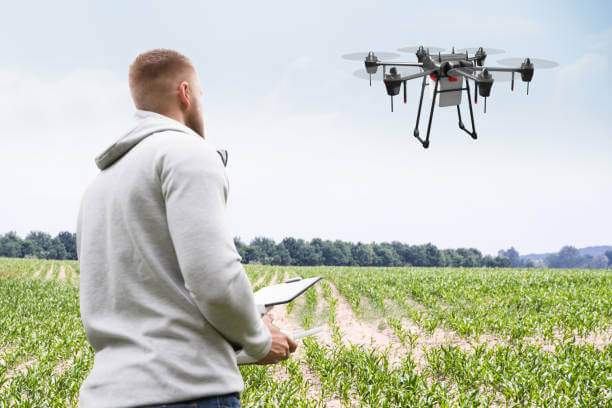
Let’s dive into a step-by-step guide to drone surveying and mapping.
1. Strategizing and Arrangements
Area choice. Define the region you wish to survey precisely. By doing this, you can make sure the drone collects the necessary data, giving you a full set of data for your survey.
Weather analysis. Try to schedule your drone survey for a day with little wind and a clear sky to maximize image quality and minimize the risk of damage to your drone. The day before and the morning of your survey, double-check the forecast.
Equipment analysis. Make sure your drone’s batteries are completely charged and that any sensors or cameras you intend to utilize are operational before you use any of your equipment. When you’re out in the field, the last thing you want is to be caught off guard by malfunctioning equipment or low battery levels.
2. Flight Analysis
Calculate the altitude. The resolution of your survey photos is significantly influenced by the height at which you fly.
There is a trade-off between speed and quality because lower altitudes produce higher resolution but cover less land in every picture.
Taking into account the particular needs of the project, you must determine the ideal height for your drone survey.
Establish waypoints. Set waypoints to predetermine the drone’s flight path using drone surveying software. This guarantees that the entire survey region is covered.
Settings for overlap. Establish a substantial overlap (often 60–80%) between photos for photogrammetry surveys. For 3D models to be generated accurately, this overlap is essential.
3. Flight Performance
Launching. Take off from a wide, open area with the drone.
Observe the flight. Watch the drone’s progress, the battery level, and any potential obstructions to the flight path as it follows its predefined route.
Make a safe landing. Land the drone safely in the assigned region after the survey is finished. Make enough room for landing and avoid approaching the drone until it has shut off.
4. Processing and Storage of Data
The transfer of data. Once your survey is complete, move all of the data from the drone’s storage to a computer, including any images, LiDAR data, or sensor readings.
Drone Surveying Software. Utilize specialized software for drone surveying to merge your RGB photographs into intricate ortho mosaics or three-dimensional models.
Software for LiDAR can process the data to create various point clouds, such as surface models or digital terrain.
5. Write Your Report
Arrange the results. Organize your survey data logically, starting with the most important results.
Visual information. Add the 3D models, orthomosaics, and any other visuals produced by the survey.
Interpretation. Provide a narrative explanation to go along with the data, explaining the implications of the results within the framework of the survey’s goals.
Recommendations. Provide any recommendations for actions or conclusions derived from the data based on the analysis.
How are Drone Surveying and Mapping Used?
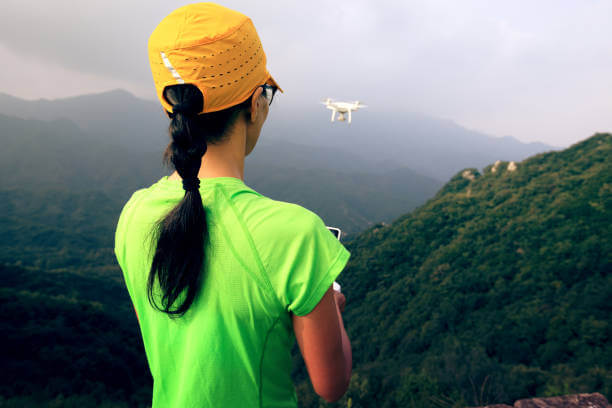
It would help if you had a basic understanding of drone surveying.
However, you may still be attempting to visualize its real-world use in the field. Who might use a drone surveyor for hire? Which sectors are using drone pilots for surveying, and what precisely are they doing at any given time?
The most popular applications of drone mapping and surveying in the field at the moment are listed here.
1. Cartography and Land Mapping
Drones are transforming land mapping by producing detailed 3D representations and crisp ortho mosaics of regions that were previously only known from outdated, poor quality, or nonexistent data.
This advance in technology makes it possible to quickly create extremely accurate cadastral* maps, especially in difficult or isolated areas.
These aerial photos are a useful tool for asset management because they clearly show features including drainage systems, hydrants, road indicators, curbs, and signage.
These photos are further refined by post-processing using photogrammetry to produce complex elevation models, contour delineations, and break lines.
*Note: Cadastral data is surveying information that is used to display subdivision lines, property borders, and other relevant details.
2. Planning for Infrastructure and Land Management
Professionals in land management and urban planning can benefit from drone-captured aerial imagery in a variety of ways, including:
- Examining possible locations
- Coordinating allocation plans
- Real infrastructure construction
Pre-construction engineering assessments can benefit from the detailed topographical models of locations that can be created using aerial survey data.
The data that has been assimilated can be seamlessly integrated with CAD or BIM platforms, enabling engineers to start 3D modeling right away.
Drone surveys can be used sporadically throughout a project to track progress and identify any problems because they are comparatively cheap.
Drone photos superimposed over original drawings offer up-to-date information on construction progress and compliance with standards.
3. Precise Quantification
Surveyors may do surface and distance computations using orthophotos created with drone data, which can assist with tasks like stockpile monitoring.
Furthermore, specialists evaluating stock levels in mining or quarrying might benefit from using 3D mapping tools to perform volume estimates using drone data, aiding in inventory checks and general oversight tasks.
4. Keeping an Eye on Slopes
Slope data can be immediately extracted from drone photographs by automated GIS assessments, which can aid in segmenting regions and determining gradients on the ground surface.
The planning of slope oversight, which is essential for landslide prediction and mitigation, can also benefit from this data.
Sequential ortho mosaics can also highlight changes in the rate and direction of terrestrial motions, which can be used to predict geological events and protect infrastructure.
5. Planning for Urban Development
Developers can expedite urban development by using drone surveys to rapidly and cheaply gather vast volumes of precise data.
Planners can be helped in comprehending the socio-environmental subtleties of sites and predict the possible effects of various development plans by using visualizations made with data from drone surveys.
Conclusion
That ends our discussion on drones in this article today, people.
Have any of you used these drones before? What do you think of them?
Which Drones, according to you, are the Best Drones for Surveying and Mapping?
Have you got a favorite drone that I missed in this post?
Would you kindly share your opinions and remarks below?

